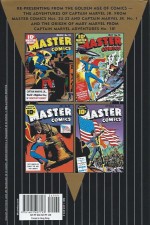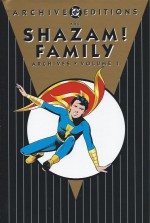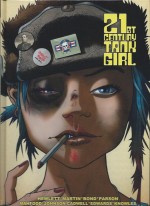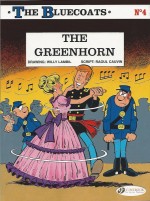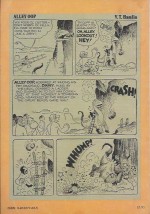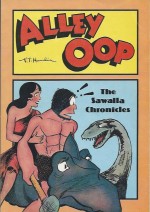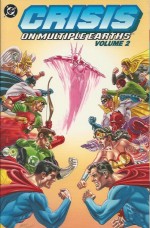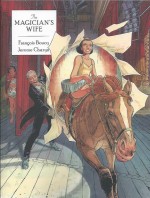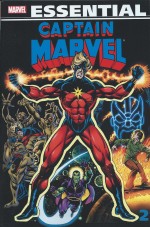
By Gerry Conway, Marv Wolfman, Mike Friedrich, Jim Starlin, Steve Englehart, Chris Claremont, Wayne Boring, Al Milgrom, Alfredo Alcala & various (Marvel)
ISBN: 978-0-7851-4536-3
In 1968, upstart Marvel was in the ascendant. Their sales were rapidly overtaking industry leaders National/DC and Gold Key Comics and, having secured a new distributor which would allow them to expand their list of titles exponentially, the company was about to undertake a creative expansion of unparalleled proportions.
Once each individual star of “twin-books†Tales of Suspense, Tales to Astonish and Strange Tales was awarded their own title the House of Ideas just kept on going. In progress was a publishing plan which sought to take conceptual possession of the word “Marvel†through both reprint series like Marvel Tales, Marvel Collectors Items Classics and Marvel Super-Heroes. Eventually showcase titles such as Marvel Premiere, Marvel Spotlight and Marvel Feature also proudly trumpeted the name so another dead-cert idea was to publish an actual hero named for the company – and preferably one with some ready-made cachet and pedigree as well.
After the infamous DC/Fawcett copyright court case of the 1940s-1950s, the prestigious designation Captain Marvel disappeared from newsstands. In 1967, during the “Camp†craze superhero boom generated by the Batman TV series, publisher MLF secured rights to the name and produced a number of giant-sized comics featuring an intelligent robot who (which?) could divide his body into segments and shoot lasers from his eyes.
Quirky, charming and devised by the legendary Carl Burgos (creator of the Golden Age Human Torch), the series nevertheless failed to attract a large following in that flamboyantly flooded marketplace and on its demise the name was quickly snapped up by Marvel Comics Group.
Marvel Super-Heroes was a brand new title: it had been reconfigured from double-sized reprint title Fantasy Masterpieces, which comprised vintage monster-mystery tales and Golden Age Timely Comics classics, but with the twelfth issue it added a showcase section for characters without homes such as Medusa, Ka-Zar, Black Knight and Doctor Doom, plus new concepts like Guardians of the Galaxy and Phantom Eagle to try out in all-new stories.
To start the ball rolling, it featured an alien spy sent to Earth from the Kree Galaxy. He held a Captain’s rank and his name was Mar-Vell.
After two appearances Captain Marvel catapulted straight into his own title and began a rather hit-and-miss career, battling spies, aliens, costumed cut-ups such as Sub-Mariner, Mad Thinker and Iron Man but most especially elements of his own rapaciously colonialist race – such as imperial investigative powerhouse Ronan the Accuser – all the while slowly switching allegiances from the militaristic Kree to the noble, freedom-loving denizens of Earth.
Disguised as NASA scientist Walter Lawson he infiltrated a US airbase and grew closer to security chief Carol Danvers, gradually going native even as he was constantly scrutinised by his ominously orbiting commanding officer Colonel Yon-Rogg – Mar-Vell’s ruthless rival for the love of the teeming starship’s medical officer Una…
The impossible situation came to a head when Mar-Vell gave his life to save the empire from overthrow from within and colossal hive-mind Supreme Intelligence inextricably bonded the expiring warrior with voice-of-a-generation and professional side-kick Rick Jones who, just like Billy Batson (the naïve lad who turned into the original Fawcett Captain Marvel by shouting “Shazam!â€), switched places with a mighty adult hero whenever danger loomed.
By striking a pair of ancient, wrist worn “Nega-bands†together they could temporarily trade atoms: one active in our universe whilst the other floated, a ghostly untouchable, ineffectual voyeur to events glimpsed from the ghastly anti-matter Negative Zone.
The Captain was an alien lost on Earth, a defector from the militaristic Kree who fought for humanity three hours at a time, atomically chained to Rick by mysterious wristbands which enabled them to share the same space in our universe, but whenever one was active here the other was trapped in a terrifying isolated antimatter hell…
The book was cancelled soon after that… only to return some more! A series which would not die, Captain Marvel returned again in the summer of 1972 for another shot at stardom and intellectual property rights security.
This second stellar monochrome Essential compilation (spanning September 1972 to September 1976 whilst gathering Captain Marvel #21-35, 37-46, plus key crossover appearances from Iron Man #55 and Marvel Feature #12) finds him at his best and worst as mediocre tales by veteran creators were brushed aside and the hero was transfigured overnight by the talents of a very talented newcomer, making the directionless Kree Warrior briefly the most popular and acclaimed title in Marvel’s firmament.
It all began rather inauspiciously in Captain Marvel #22 where scripter Gerry Conway with artists Wayne Boring & Frank Giacoia reintroduced the cosmic crusader in ‘To Live Again!’ Bonded to Rick by the uncanny Nega-bands, Mar-Vell had languished in the Negative Zone for a seeming eternity as Jones tried to carve out a rock star career and relationship with new love Lou-Ann, but eventually his own body betrayed him and the Kree Captain was expelled back into our reality…
Luckily Lou-Ann’s uncle Benjamin Savannah is a radical scientist on hand to help Rick’s transition, but as the returned Marvel unsteadily flies off, across town another boffin is rapidly mutating from atomic victim to nuclear threat and #23 (by Marv Wolfman, Boring & Frank McLaughlin) sees the Kree Warrior calamitously clash with the rampaging Megaton resulting in ‘Death at the End of the World!’.
Wolfman, Boring & Ernie Chan then deal ‘Death in High Places!’ as Rick is targeted by lethal Madame Synn and felonious cyborg Dr. Mynde who need Mar-Vell to help them plunder the Pentagon…
After seemingly running in place, perpetually one step ahead of cancellation (folding many times, but always quickly resurrected – presumably to secure that all important Trademark name), the Captain was handed to a newcomer named Jim Starlin who was left alone to get on with it.
With many of his fellow neophytes he began laying seeds (particularly in Iron Man and Daredevil) for a saga that would in many ways become as well regarded as the epochal Fourth World Trilogy by Jack Kirby which it emulated.
However the “Thanos Warâ€, despite superficial similarities, soon developed into a uniquely modern experience. And what it lacked in grandeur it made up for with sheer energy and enthusiasm.
The first inkling came in Iron Man #55 (February 1973) where Mike Friedrich scripted Starlin’s opening gambit in a cosmic epic that would change the nature of Marvel itself. ‘Beware The… Blood Brothers!’ (inked by Mike Esposito) introduced haunted humanoid powerhouse Drax the Destroyer, trapped by extraterrestrial invader Thanos under the Nevada desert and in dire need of rescue. That came when the Armoured Avenger blazed in, answering a mysterious SOS…
As much as I’d love to claim Marvel’s fortunes are solely built on the works of Kirby and Steve Ditko, I’m just not able to. Whereas I do know that without them the modern monolith would not exist, it is also necessary to acknowledge the vital role played by a second generation creators who enlisted in the early 1970s. Marvel’s invitation to fresh, new, often untried talent paid huge dividends in creativity and – most importantly at a time of industry contraction – new sales.
Arguably the most successful of the newcomers was Starlin. As well as the landmark Master of Kung Fu, which he worked on with equally gifted confederates Steve Englehart and Al Milgrom, his earliest and most fondly regarded success was the ambitiously epic cosmic adventure which unfolded here.
A month later in Captain Marvel #25, Friedrich, Starlin, & Chic Stone unleashed ‘A Taste of Madness!’ and the alien outcast’s fortunes changed forever.
When Mar-Vell is ambushed by a pack of extraterrestrials he is forced to admit that his powers are in decline. Unaware that an unseen foe is counting on that, Rick manifests and checks in with Dr. Savannah only to find himself accused by his beloved Lou-Ann of the savant’s murder.
Hauled off to jail Rick brings in Mar-Vell who is confronted by a veritable legion of old foes before deducing who in fact his true enemies are…
Issue #26 sees Rick free of police custody and confronting Lou-Ann over her seeming ‘Betrayal!’ (Starlin, Friedrich & Dave Cockrum). Soon, however, he and Mar-Vell realise they are the targets of psychological warfare: the girl is being mind-controlled whilst Super Skrull and his hidden “Masterlord†are manipulating them and others in search of a lost secret…
When a subsequent scheme to have Mar-Vell kill The Thing spectacularly fails, Thanos takes personal charge. The Titan is hungry for conquest and wants Rick because his subconscious conceals the location of an irresistible ultimate weapon.
Rick awakes to find himself ‘Trapped on Titan!’ (Pablo Marcos inks) but does not realise the villain has already extracted the location of a reality-altering Cosmic Cube from him. Rescued by Thanos’ father Mentor and brother Eros, the horrified lad sees firsthand the extent of genocide the death-loving monster has inflicted upon his own birthworld and summons Captain Marvel to wreak vengeance…
Meanwhile on Earth, still-enslaved Lou-Ann has gone to warn the Mighty Avengers and summarily collapsed. By the time Mar-Vell arrives in #28 she lies near death. ‘When Titans Collide!’ (inks by Dan Green) reveals another plank of Thanos’ plan. As the heroes are picked off by psychic parasite The Controller, Mar-Vell is assaulted by bizarre visions of an incredible ancient being. Fatally distracted, he becomes the massive mind-leech’s final victim…
Al Milgrom inks ‘Metamorphosis!’ as the Kree captain’s connection to Rick is severed and he is transported to an otherworldly locale where an eight billion year old being named Eon reveals the origins of life whilst overseeing the abductee’s forced evolution into the ultimate warrior: a universal champion gifted with the subtly irresistible power of Cosmic Awareness…
Returned to Earth and reconnected to his frantic atomic counterpart, the newly-appointed “Protector of the Universe†goes after The Controller, thrashing the monumentally powerful parasite in a devastating display of skill countering super-strength in #30’s ‘…To Be Free from Control!’
Iron Man meanwhile has also recovered and headed for Marvel Feature #12 to join the Thing in ending a desert incursion by Thanos’ forces before enduring ‘The Bite of the Blood Brothers!’ (Friedrich, Starlin, & Joe Sinnott), after which the story continues in Captain Marvel #31 with ‘The Beginning of the End!’ (inked by Green & Milgrom) wherein the Avengers – in a gathering of last resort – are joined by psionic priestess Moondragon and Drax – one of the Titan’s many victims and resurrected by supernal forces to destroy Thanos…
The Titan has been revealed as a lover of the personification of Death who wants to give her Earth as a betrothal present. To that end he uses the Cosmic Cube to turn himself into ‘Thanos the Insane God!’ (Green) and with a thought captures all opposition to his reign. However his insane arrogance leaves the cosmically aware Mar-Vell with a chance to undo every change; brilliantly outmanoeuvring and defeating ‘The God Himself!’ (inks by Klaus Janson)…
With the universe saved and restored, Starlin’s run ended on a relatively weak note in CM #34 as ‘Blown Away!’ – inked by Jack Abel and dialogued by Englehart – explored the day after doomsday.
As Rick tries to revive his on-again, off-again musical career, secret organisation the Lunatic Legion despatches Nitro, the Exploding Man to acquire a canister of nerve gas from an Air Force base where Carol Danvers is head of Security…
Although the Protector of the Universe defeats Nitro, he succumbs to the deadly toxin. From this exposure he would eventually contract the cancer that killed him, as depicted in Marvel’s first Graphic Novel, The Death of Captain Marvel… but that’s a tale for a different review…
Issue #35 finds Mar-Vell all but lifeless in ‘Deadly Genesis’ (Englehart, Friedrich & Alfredo Alcala), while simultaneously showing Rick languishing in the Negative Zone and attacked by Annihilus until a barely-remembered three-hour time-limit automatically switches his body with the comatose Kree hero.
Later, as Rick’s manager Mordecai Boggs drives him to a gig, Rick’s consciousness slips into the N-Zone and animates Mar-Vell’s unresponsive body to escape Annihilus, and discerns this new power is merely one tactic in a cunning plan devised by the duplicitous Supreme Intelligence…
Meanwhile on Earth, Rick’s vacated body has been taken to hospital where old friends Ant-Man and the Wasp are fortuitously visiting when the Living Laser attacks. The villain has been artificially augmented by his new masters, but it’s not enough to stop the former Avengers or prevent Rick reclaiming his body and using the Nega-bands to restore his bonded soul mate to their particular brand of normality…
At this time deadline difficulties caught up with the Captain and #36 was reduced to running a reprint of his origin from Marvel Super-Heroes #12. This Essential edition only includes the foreboding 3-page bookend ‘Watching and Waiting’ by Englehart, Starlin, Alan Weiss & friends before the saga properly relaunches in #37 with ‘Lift-Off!’ by Englehart, Milgrom & Janson.
Although Mar-Vell quickly discerns that the Lunatic Legion’s attacks stem from the Moon, Rick insists on playing a gig before they set off. After bidding farewell to Mordecai and his sometimes stage partner Dandy, they wisely prepare for their trip to the satellite by outfitting the boy with an advanced spacesuit before Mar-Vell blasts off.
He only makes it as far as the outer atmosphere before being attacked by another Lunatic agent. The cyborg Nimrod is no match for Kree firepower however and in the Neg-Zone the implacable Annihilus endures a painful defeat when he again assaults Rick and discovers the sheer power packed into his EVA gear…
Crisis averted, the bored, naive kid swallows the “vitamin†Dandy slipped him before departure and is transported on a trip unlike any he has ever experienced. Tragically, as Mar-Vell reaches the air-filled lost city in the “Blue Area of the Moon†he too begins to experience bizarre hallucinations and is utterly unable to defend himself when the all-powerful Watcher ambushes him…
The austere, aloof cosmic voyeur Uatu the Watcher is part of an ancient, impossibly powerful race of immortal beings who observe all that occurs throughout the vast multiverse but never act on any of it. Non-interference is their fanatical doctrine but Uatu has continually bent – if not broken – the adamantine rule ever since he debuted in Fantastic Four #13…
Now somehow, the Legion have co-opted the legendarily neutral astral witness. Once Uatu defeats Mar-Vell, he despondently dumps his victim with the Lunatic Legion who are exposed as rebel Kree plotting to overthrow the Supremor. Fundamentalists of the original blue race which assimilated the millions of other species, these colonially aggressive and racially purist Blue Kree plan to execute their captive who seemingly has ‘…No Way Out!’ but are unprepared for the closer psychic link which the hallucinations have forged between Earth kid and Kree captain…
With the insurgents defeated, Mar-Vell and Rick follow the repentant Uatu as he returns to his own distant world in #39 to voluntarily undergo ‘The Trial of the Watcher’…
In the aftermath of that bizarre proceeding Rick and Mar-Vell are finally liberated from their comic bond. With both now co-existing in the positive-matter universe and able to return and leave the Negative Zone at will, their troubles seem over. They couldn’t be more wrong…
CM #40 shifts focus as ‘Rocky Mountain ‘Bye!’ (inked by Al McWilliams) reveals how the space-farers return to an Earth which has no real use for them. As Mar-Vell battles a deadly beast possessing the body of his first love Medic Una, Rick finds his music career and even his beliefs are considered irrelevant and of no value. Equally heart-sore and dispirited, the former cellmates reunite and decide to travel to the stars together…
The first stop is Hala, capital of the Kree Empire as #41 reveals ‘Havoc on Homeworld!’ (Englehart, Milgrom, Bernie Wrightson, P. Craig Russell, Bob McLeod & Terry Austin) with the populace swept up in a race war against “Pinks†(human flesh-toned Kree mulattos like Mar-Vell).
Determined to warn the Supremor of the conflict and the schemes of the Lunatic Legion, the heroes are appalled to learn the strife has been actively instigated by the colossal mind-collective…
From his earliest moments in military service Mar-Vell has been groomed by the Supremor to be its ultimate foe, As the amalgamation of minds seeks to jump-start the development of the evolutionarily-stalled Kree it desperately needs an enemy to contend against and grow strong…
Distracting his baffled, betrayed opponents with Ronan the Accuser, the Supreme Intelligence places one Nega-band on Rick and another on Mar-Vell and casually banishes them to the farthest reaches of the empire…
Issue #42 sees them deposited in an insane pastiche of Earth’s wild west mining towns and quickly embroiled in interstellar claim-jumping and a ‘Shoot-Out at the O.K. Space Station!’ (inks by Giacoia & Esposito). As the Kree with a star on his chest lays down the law and has a showdown with the cosmically-charged Stranger, close by Drax the Destroyer is ravaging worlds and planetoids, slowly going insane for lack of purpose even as Rick goes his own way and is almost fatally distracted by a beautiful girl nobody else can see…
Drax was created to kill Thanos but since the Titan’s defeat the devastating construct has wandered the universe and slowly gone crazy. CM #43 shows how – unaware that Thanos still lives – the purposeless nemesis takes the opportunity to assuage his frustrations by attacking the hero who stole his glory in ‘Destroy! Destroy!’ (Englehart & Milgrom).
The epic bout ends in #44 as ‘Death Throws!’ sees the pointless conflict escalate until Rick’s imaginary friend intervenes and opens the Destroyer’s eyes…
With sanity restored Mar-Vell then voyages to a Kree colony world ravaged by cyborgs and Null-Trons and discovers the Supremor has been subtly acting to merge him and Rick into one puissant being to further his evolutionary agenda in ‘The Bi-Centennial!’ Forewarned, and with a small band of the most unlikely allies, the cosmic conflict then wraps up in blockbusting fashion as Rick and Mar-Vell unite by not combining to defeat the Supremor in a battle ‘Only One Can Win!’ (Chris Claremont, Milgrom & Austin)…
This bombastic battle book of cosmic conflict and stellar spectacle also includes a wealth of bonus pages beginning with a comprehensive cutaway ‘Map of Titan’ from Captain Marvel #27, three pages of new artwork from 1980s reprint series The Life of Captain Marvel Special Edition‘, and a copious cover gallery and pinups by Starlin from that series.
Captain Marvel has never claimed to be the company’s most popular or successful character and some of the material collected here is frankly rather poor. However, the good stuff is amongst the very best that the company has produced in its entire history.
If you want to see how good superhero comics can be you’ll just have to take the rough with the smooth and who knows… you might see something that makes it all worthwhile…
© 1972, 1973, 1974, 1975, 1976, 2013 Marvel Characters, Inc. All rights reserved.


